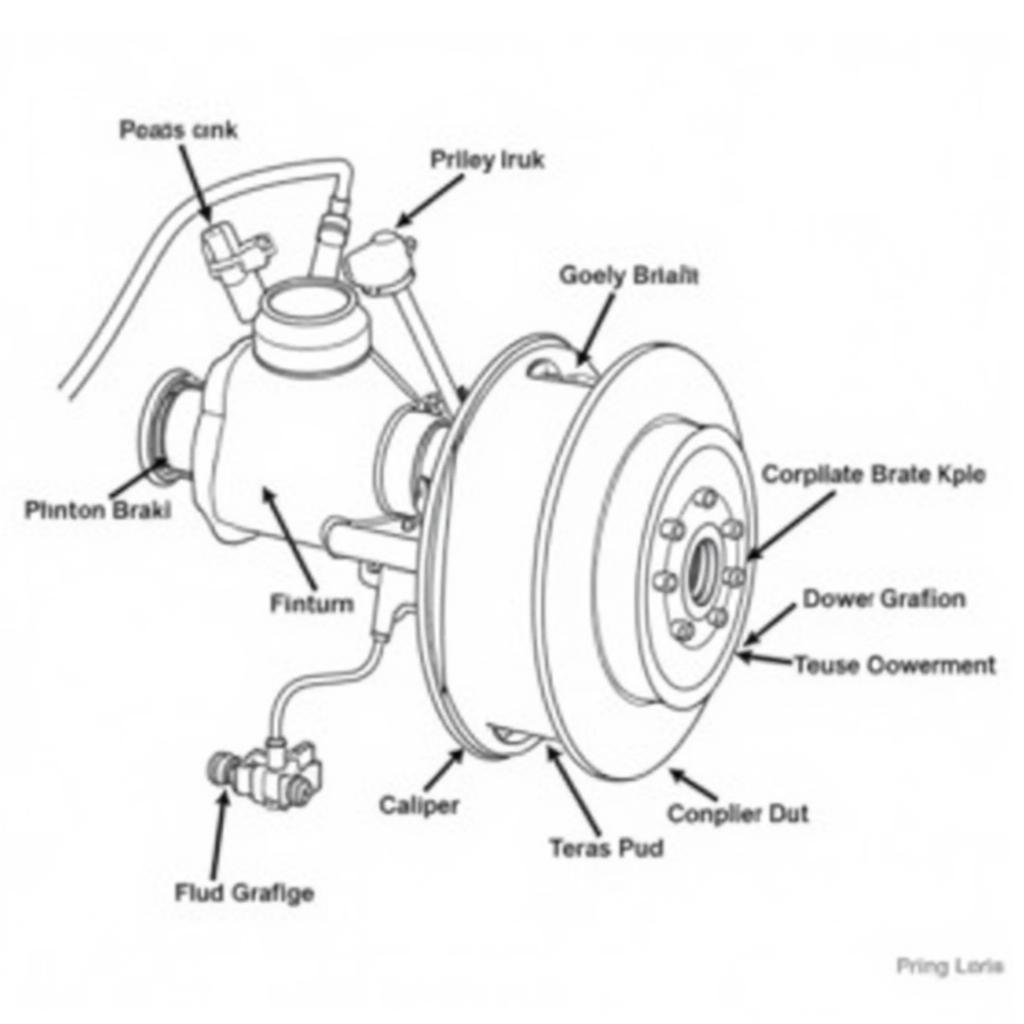If your 2005 Hyundai Santa Fe dashboard is lit up like a Christmas tree with both the battery and brake warning lights on, you’re not alone. This common issue can stem from a variety of culprits, ranging from a simple loose connection to a failing alternator. This comprehensive guide will walk you through the possible causes, troubleshooting steps, and solutions to get your Santa Fe back on the road safely.
Understanding what each warning light signifies is crucial. The battery light, often depicted as a battery icon, indicates a problem with the charging system. This means the battery isn’t receiving sufficient charge from the alternator while the engine is running. On the other hand, the brake warning light, typically a circle with parentheses on either side, signals an issue with your braking system. This could point to low brake fluid, worn brake pads, or a problem with the ABS system.
While these lights illuminating simultaneously might seem daunting, don’t panic. It’s often due to a common factor impacting both systems.
Common Culprit: A Faulty Alternator
The most frequent reason for both the battery and brake warning lights to activate in a 2005 Hyundai Santa Fe is a failing alternator. The alternator acts as the engine’s power generator, charging the battery and powering electrical components while the car is running. If it malfunctions, the battery won’t receive a charge, leading to the battery light illuminating.
Furthermore, a failing alternator can cause a voltage drop in the car’s electrical system, potentially triggering the brake warning light as well. This is because the brake system, particularly the ABS, relies on a steady electrical current for optimal performance.
 Faulty Alternator 2005 Santa Fe
Faulty Alternator 2005 Santa Fe
Other Potential Causes
While a faulty alternator is the most likely culprit, several other possibilities warrant investigation:
1. Loose or Corroded Battery Connections
A loose or corroded battery cable can disrupt the flow of electricity between the battery and the rest of the vehicle, triggering both warning lights.
2. Dying Battery
A failing battery might not hold a charge properly, even if the alternator is functioning correctly. This can lead to insufficient power supply, illuminating both the battery and brake warning lights.
3. Brake Fluid Leak
Low brake fluid, often due to a leak, can activate the brake warning light. While this might seem unrelated to the battery light, a significant fluid leak could affect the alternator belt’s operation if it drips onto it, causing slippage and reduced charging efficiency.
4. Faulty Brake Light Switch
Although less common, a malfunctioning brake light switch can cause the brake lights to stay on constantly, draining the battery and triggering both warning lights.
Troubleshooting Steps
Follow these steps to diagnose the issue:
-
Check Battery Connections: Begin by inspecting the battery terminals for any signs of corrosion or looseness. Clean any corrosion with a baking soda and water solution and tighten the terminals securely.
-
Inspect the Alternator Belt: Visually examine the alternator belt for cracks, fraying, or looseness. A worn or loose belt can’t drive the alternator effectively, leading to inadequate charging.
-
Test Battery Voltage: Using a multimeter, check the battery voltage with the engine off and running. A healthy battery should read around 12.6 volts when the engine is off and between 13.7 to 14.7 volts when the engine is running. A significantly lower voltage reading while the engine is running points to a charging system problem, likely a faulty alternator.
 Testing Battery Voltage
Testing Battery Voltage
-
Check Brake Fluid Level: Inspect the brake fluid level in the reservoir. If it’s low, there might be a leak. It’s crucial to address a brake fluid leak immediately as it directly impacts your car’s ability to brake safely.
-
Inspect Brake Light Switch: Locate the brake light switch, usually above the brake pedal, and check for any signs of damage or malfunction. A faulty switch can cause the brake lights to stay illuminated, draining the battery.
“Always prioritize safety when working on your vehicle. If you’re unsure about any step or lack the necessary tools and experience, it’s best to consult a qualified mechanic.” – John Miller, ASE Certified Master Technician
Solutions and Recommendations
Once you’ve identified the root cause, take appropriate action:
-
Faulty Alternator: Replace the alternator with a new one. It’s recommended to have a professional mechanic handle this as it involves working with the car’s electrical system.
-
Loose/Corroded Battery Connections: Clean and tighten the battery terminals. Apply dielectric grease to the terminals after cleaning to prevent future corrosion.
-
Dying Battery: Replace the battery with a new one. Ensure you choose a battery with the correct specifications for your Santa Fe.
-
Brake Fluid Leak: Repair the leak and replenish the brake fluid. Have a professional mechanic identify and address the source of the leak.
-
Faulty Brake Light Switch: Replace the brake light switch. This is a relatively simple repair that you can potentially tackle yourself if you’re comfortable working with basic car electricals.
 Brake Fluid Reservoir 2005 Santa Fe
Brake Fluid Reservoir 2005 Santa Fe
Conclusion
Addressing both the battery and brake warning lights promptly is vital for your 2005 Hyundai Santa Fe’s safe and reliable operation. By following the troubleshooting steps outlined in this guide, you can pinpoint the root cause and take appropriate action. Remember, a well-maintained car is a safe car. If you’re ever unsure about diagnosing or repairing the issue yourself, don’t hesitate to seek professional assistance from a qualified mechanic.


